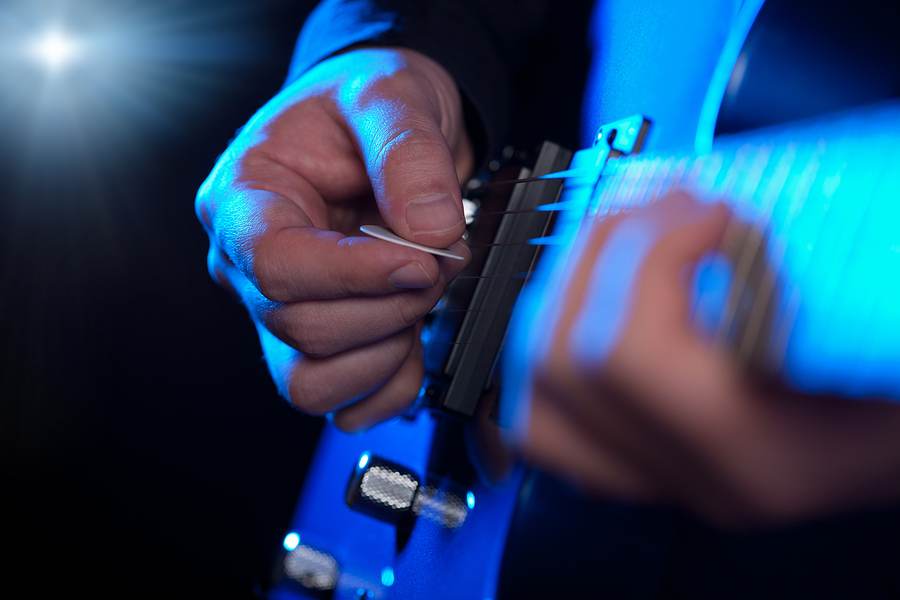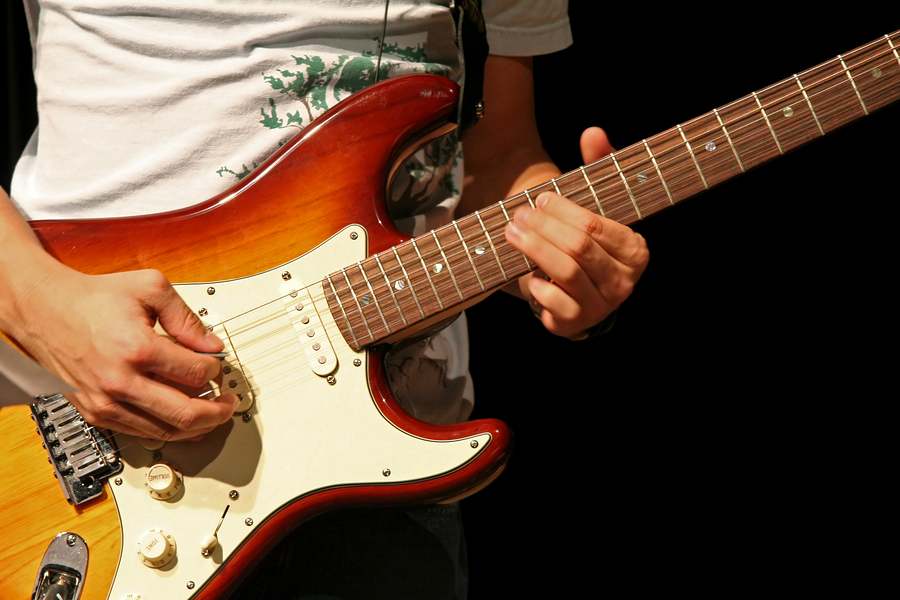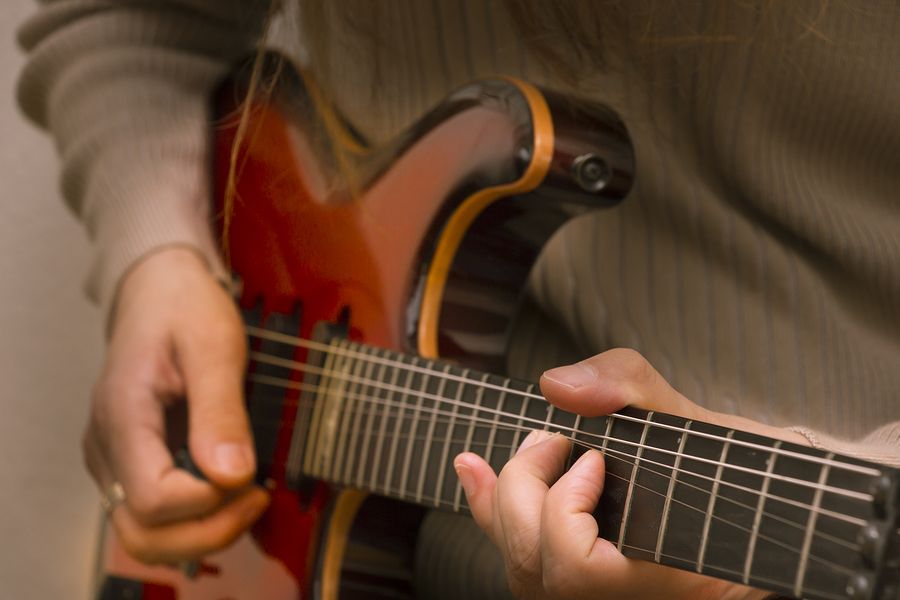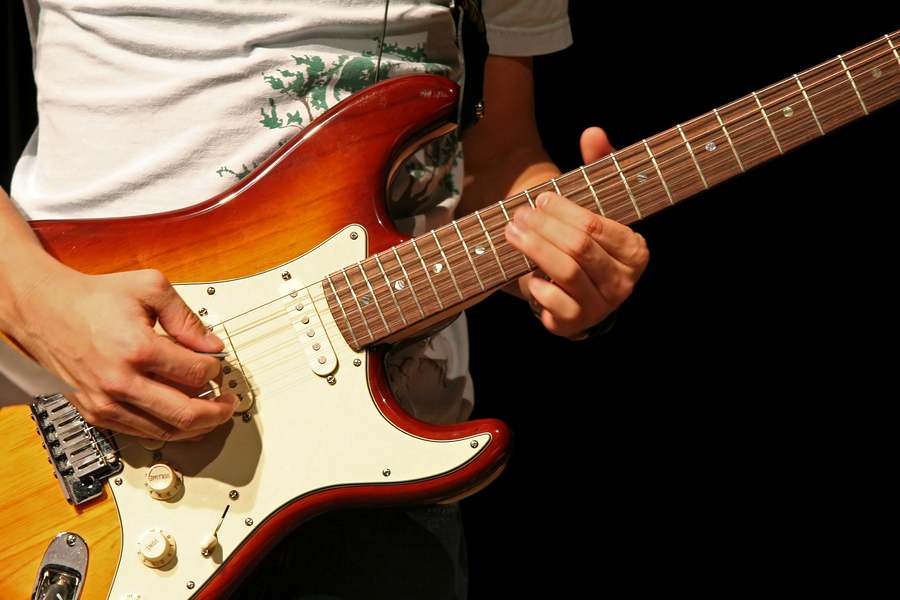Bigstock photo

It creates a more happy and uplifting sound.
The shapes of the major pentatonic scale are exactly the same as those of the minor pentatonic scale, except the root note is located else where.
Looking at it from the major scale, if you leave out the 4th and the 7th note of the major scale you’ll also end up with the major pentatonic.
The 5 shapes shown below are all the same scale (G major pentatonic scale) just played in different positions, so you can learn the scale all over the neck. That’s the whole purpose, eventually you want to have the freedom to be able to improvise around the entire fretboard.
SHAPE NAMES
Each shape has it’s own shape-name C, A, G, E and D, derived from the C-A-G-E-D system. Note: The name of the shapes have nothing to do with the key of the scale. The names refer to the chord shape (made up of the red and green dots) that is surrounded by the scale shape.
If you want to know more about the CAGED system check out: What is The CAGED System? (The Keys to The Fretboard)
ROOT NOTES
In the scale diagrams below the red dots indicate the root notes and the green dots indicate the remainder chord tones.
The root note of each shape determines the name of the scale. In the examples below all the scale shapes are in the key of G, so all the root notes are G notes.Continue Reading

 For guitar players who starting out learning to improvise, it can be quite a challenge.
For guitar players who starting out learning to improvise, it can be quite a challenge. Sweep picking is a picking technique that was invented and developed by jazz guitarists Chuck Wayne and Tal Farlow.
Sweep picking is a picking technique that was invented and developed by jazz guitarists Chuck Wayne and Tal Farlow.